Examples of workflows: Difference between revisions
Cristelags (talk | contribs) changed format to left|frame| |
Cristelags (talk | contribs) No edit summary |
||
| Line 16: | Line 16: | ||
[[File:Example4-UCSD-one-off-workflow.jpg|left|frame|Example 4. Sketch of the ingest process from the UC San Diego Library (2016) created in order to brainstorm on the steps of the ingest process and demonstrate the difference in the workflow for simple “ongoing” smaller projects versus more complex and larger scale digital projects.]] | [[File:Example4-UCSD-one-off-workflow.jpg|left|frame|Example 4. Sketch of the ingest process from the UC San Diego Library (2016) created in order to brainstorm on the steps of the ingest process and demonstrate the difference in the workflow for simple “ongoing” smaller projects versus more complex and larger scale digital projects.]] | ||
[[File:Example5-UCSD-metadataflow.jpg|left|frame|Example 5. An analysis of the [https://prezi.com/jxwd3t-x32iu/metadata-flow/ Metadata Flow] through different management systems from the UC San Diego Library (2012). Useful as both a thinking exercise and team building activity, this Prezi diagram presents extensive data flow models to determine the “database of record” or system(s) in which metadata was stored and managed. It also represents the relationships between the different data flow models, including inputs and outputs, and to create an image of the overall landscape.]] | [[File:Example5-UCSD-metadataflow.jpg|left|frame|link https://prezi.com/jxwd3t-x32iu/metadata-flow/|Example 5. An analysis of the [https://prezi.com/jxwd3t-x32iu/metadata-flow/ Metadata Flow] through different management systems from the UC San Diego Library (2012). Useful as both a thinking exercise and team building activity, this Prezi diagram presents extensive data flow models to determine the “database of record” or system(s) in which metadata was stored and managed. It also represents the relationships between the different data flow models, including inputs and outputs, and to create an image of the overall landscape.]] | ||
[[File:Example6-UCSD-Cross-functional-flowchart.jpg|left|frame|Example 6. Cross-functional flowchart of the digital object lifecycle from UC San Diego Library (2010) used to show the relationship between areas of the library from digitization to ingest into the digital repository. It was used to determine roles and responsibilities at each step, discuss the coordination and hand-off points, and work through issues, such as a what point and who should be doing quality control? After analyzing the workflow, one major outcomes was for project staff to consult with metadata specialists earlier in the process.]] | [[File:Example6-UCSD-Cross-functional-flowchart.jpg|left|frame|Example 6. Cross-functional flowchart of the digital object lifecycle from UC San Diego Library (2010) used to show the relationship between areas of the library from digitization to ingest into the digital repository. It was used to determine roles and responsibilities at each step, discuss the coordination and hand-off points, and work through issues, such as a what point and who should be doing quality control? After analyzing the workflow, one major outcomes was for project staff to consult with metadata specialists earlier in the process.]] | ||
Revision as of 02:06, 16 May 2018
A workflow is a sequence of steps toward the completion of a defined task used to manage repetitive processes. Workflow modelling helps participants and stakeholders understand the sequence of steps and their roles in the process. It can also help identify patterns, gaps, and bottlenecks to enhance efficiency and improve team dynamics.[1]
Please contribute examples of workflows to the DLF Project Managers Toolkit. If you have examples to share, please provide some context, such as the purpose or goal, institution, teams and team size, any issues or solutions relating to the specific workflow.
The Library Workflow Exchange website: This site is designed to help librarians share workflows and best practices across institutions
Finding the Balance: a Discussion of 6 Digital Library Workflows (2016)
The following are from a panel at the Digital Library Federation Forum in 2016, "Finding the Balance: a Discussion of 6 Digital Library Workflows" which eventually became an article.[2]
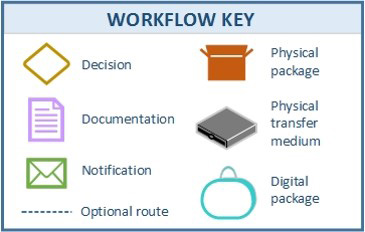
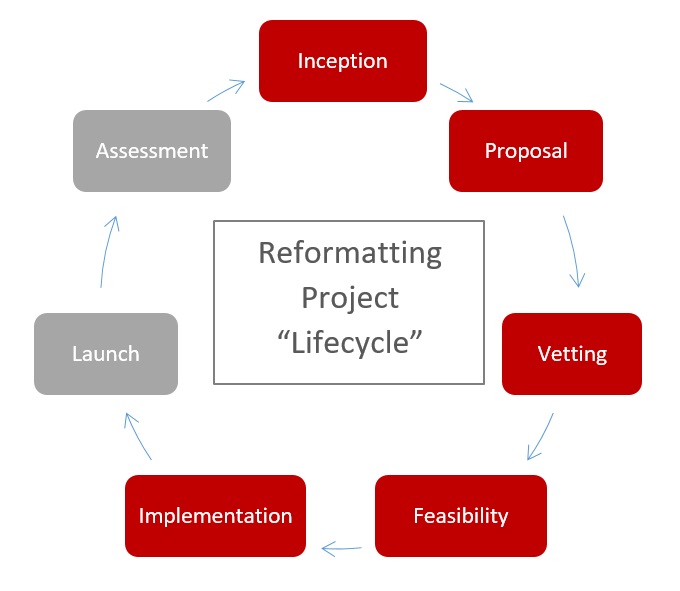
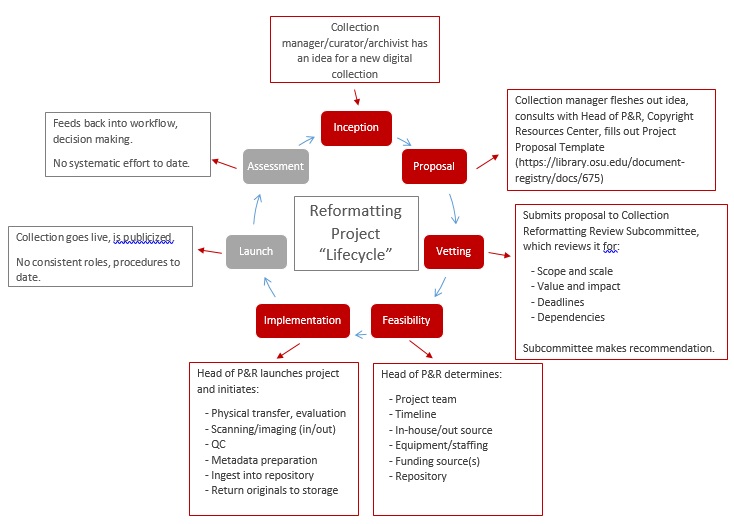
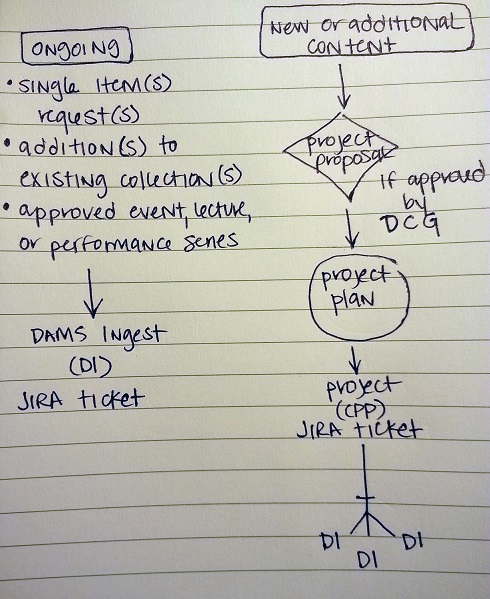
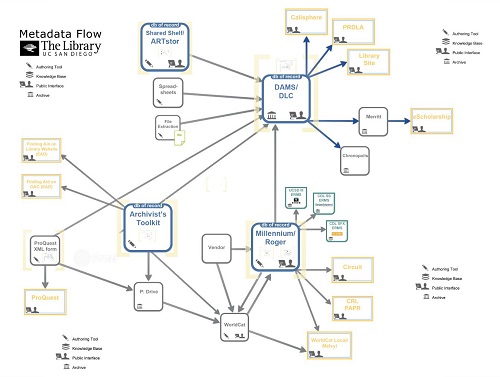
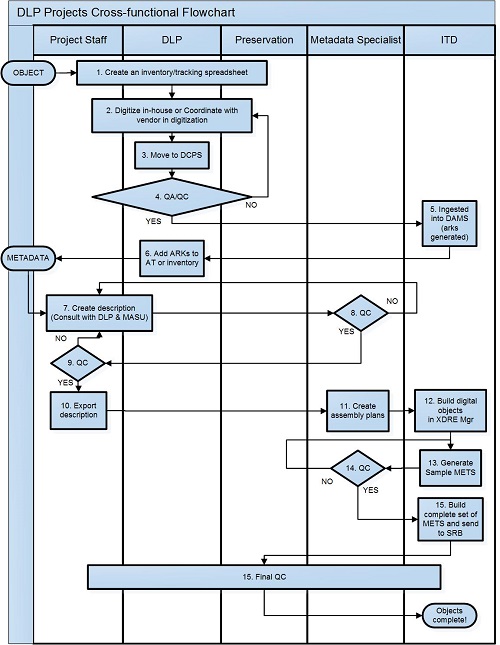
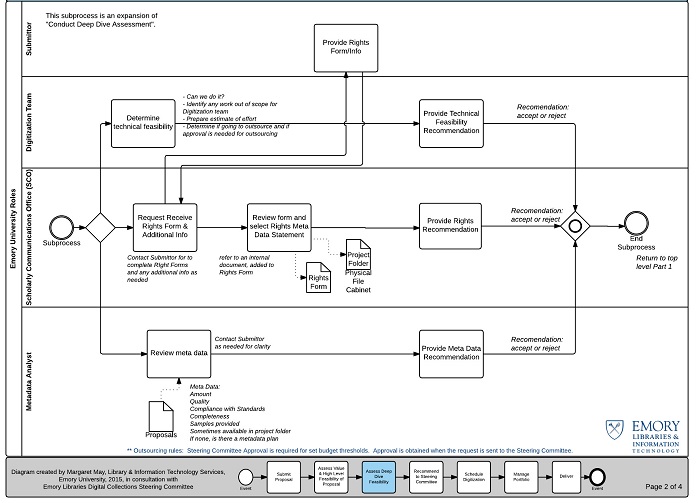
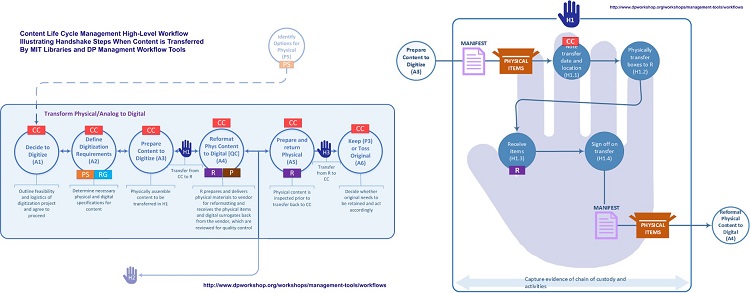
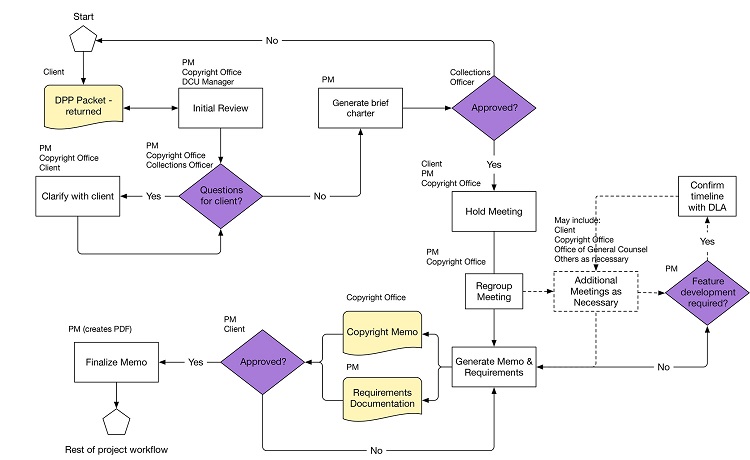
References
Allen MD, Chapman A, Blaustein B, Mak L. What do we do now? Workflows for an unpredictable world. Future Generation Computer Systems. 2015;42:1–10. Available from: [[1]].
BABOK: a guide to the Business Analysis Body of Knowledge. Toronto: International Institute of Business Analysis; 2015.
Epstein D, Maltzman R. Project workflow management: a business process approach. Plantation, FL: J. Ross Publishing; 2014.
Kmetz JL. Mapping workflows and managing knowledge. New York, NY: Business Expert Press; 2016.
Russell N, Aalst Wvan der, Hofstede AT. Workflow patterns: the definitive guide. Cambridge, MA: The MIT Press; 2016.

